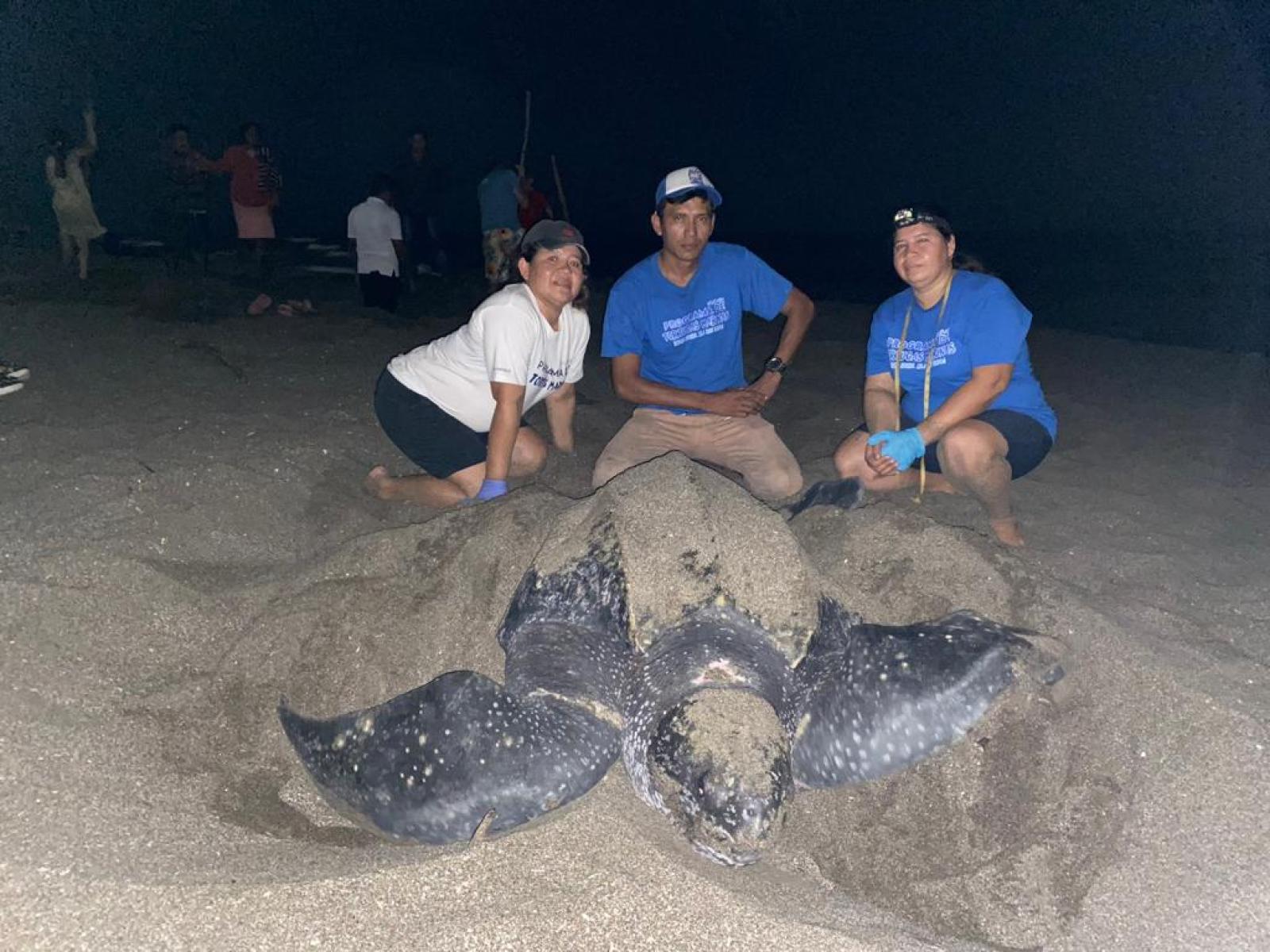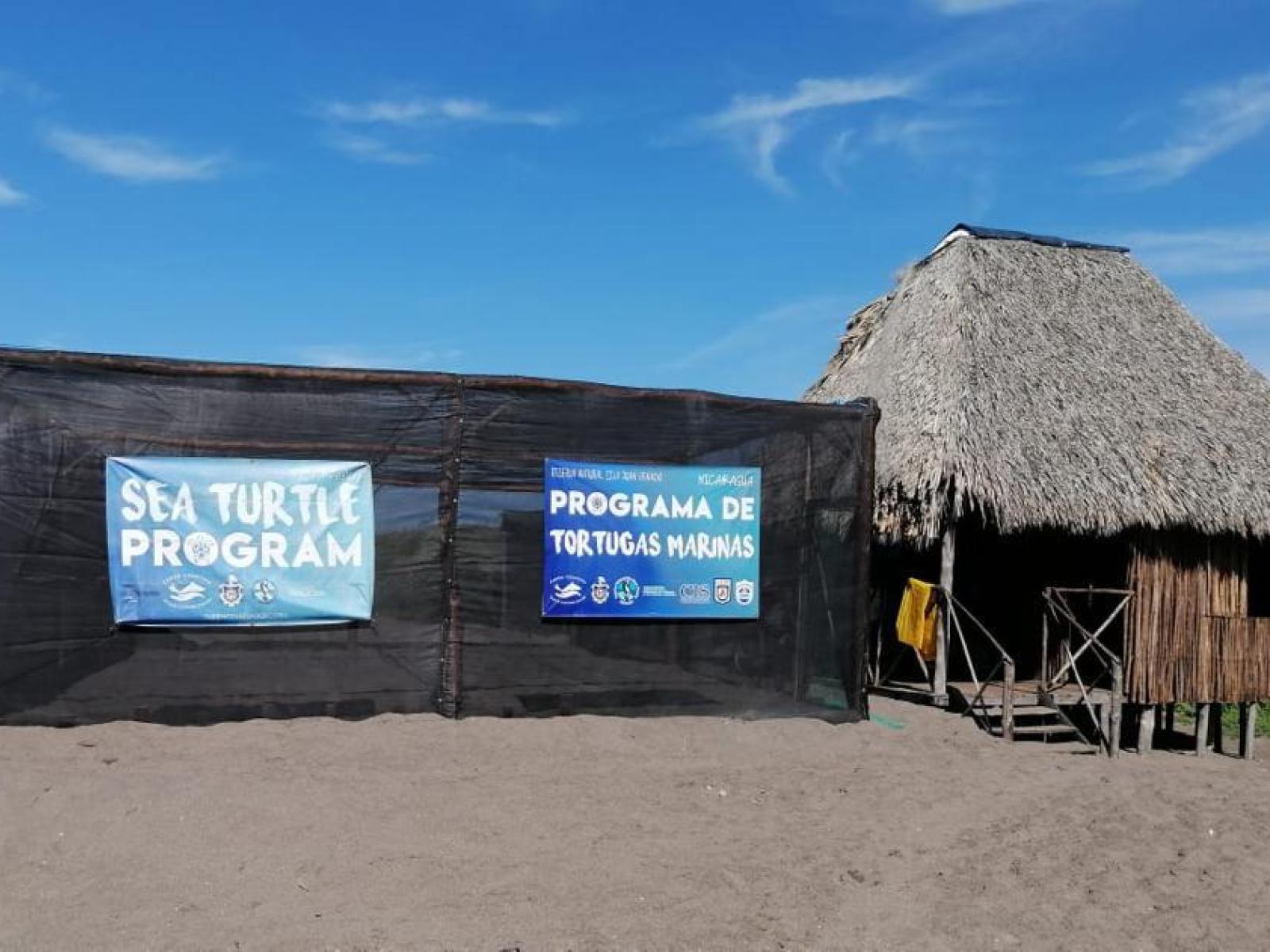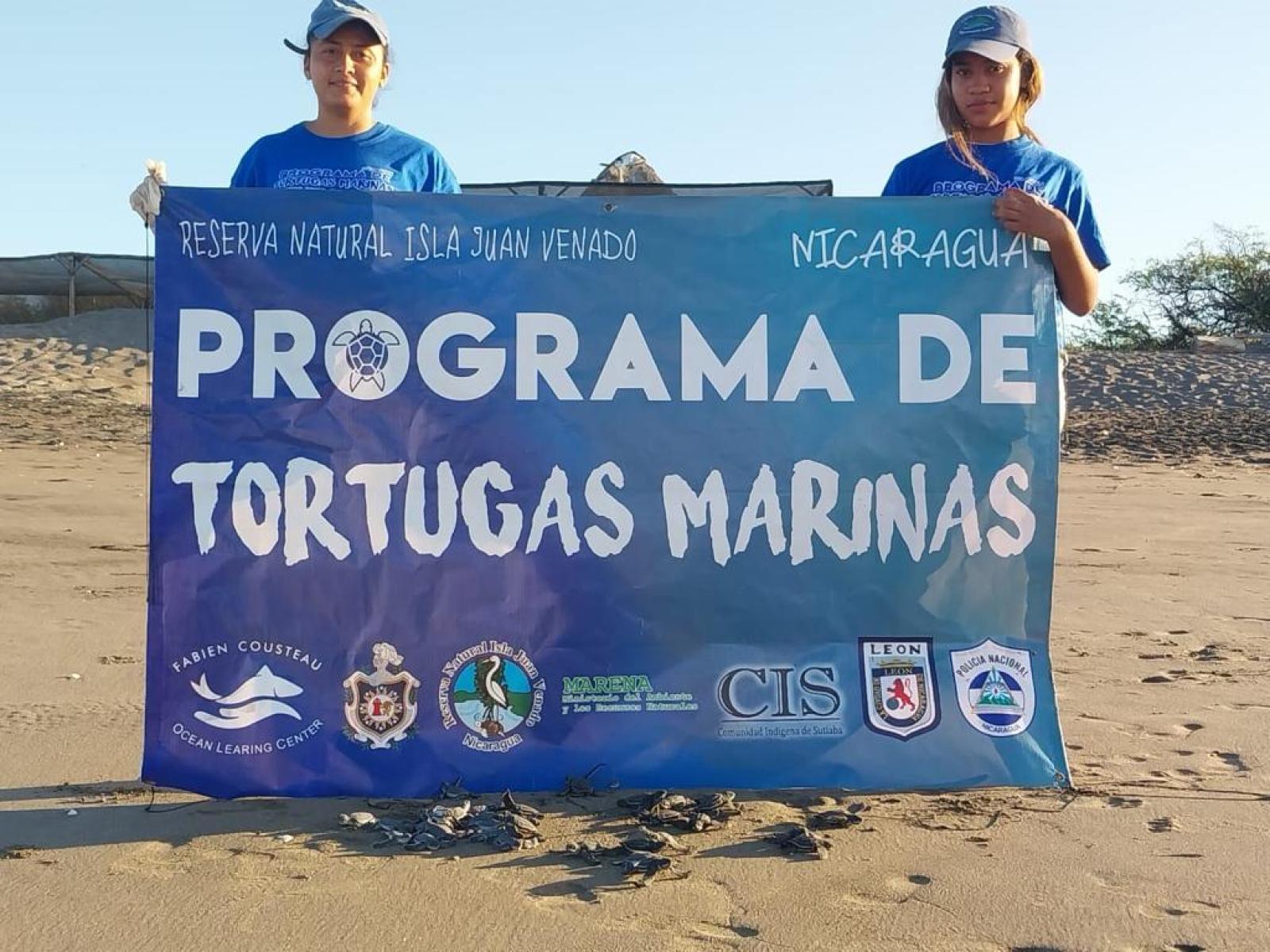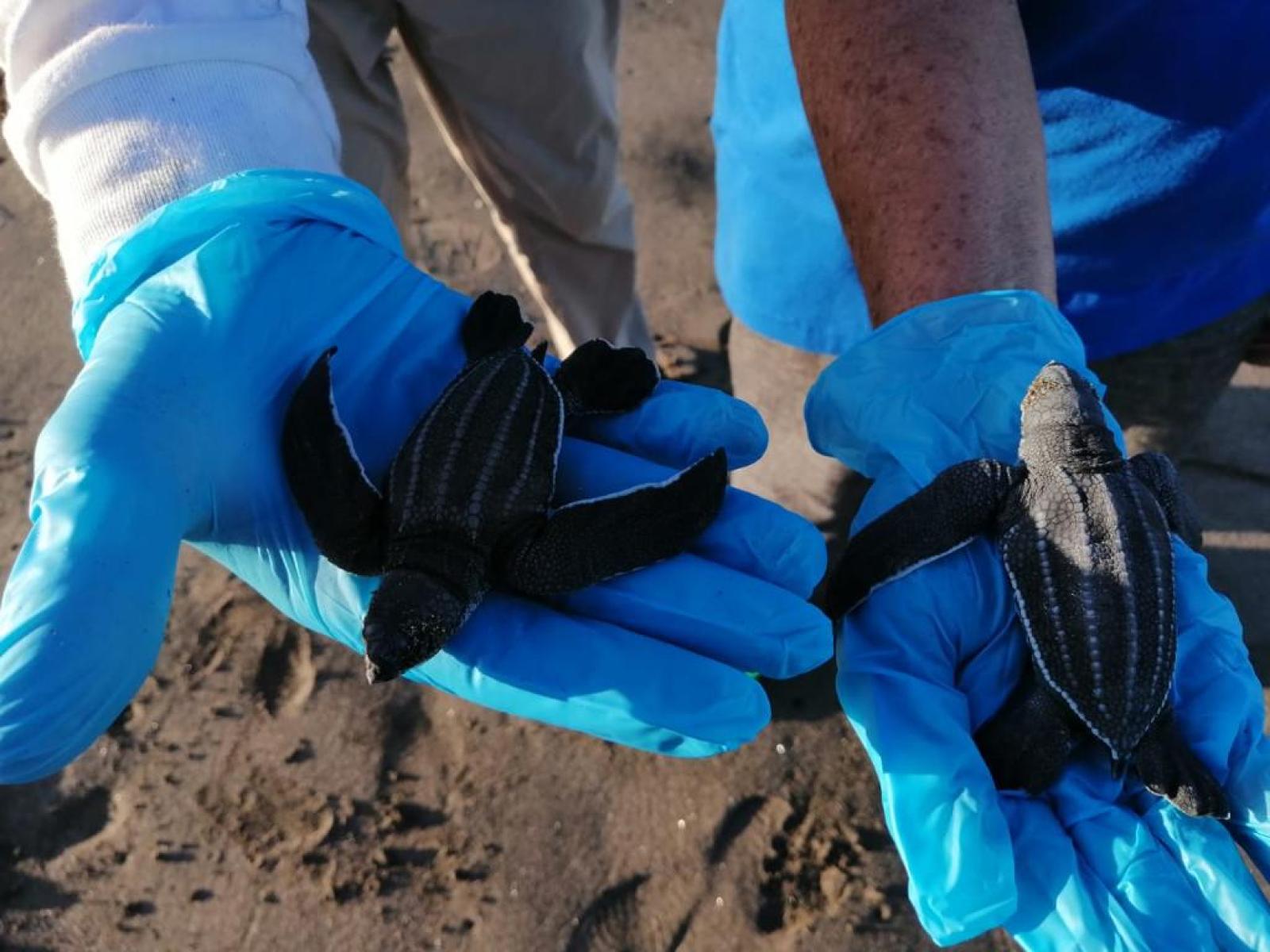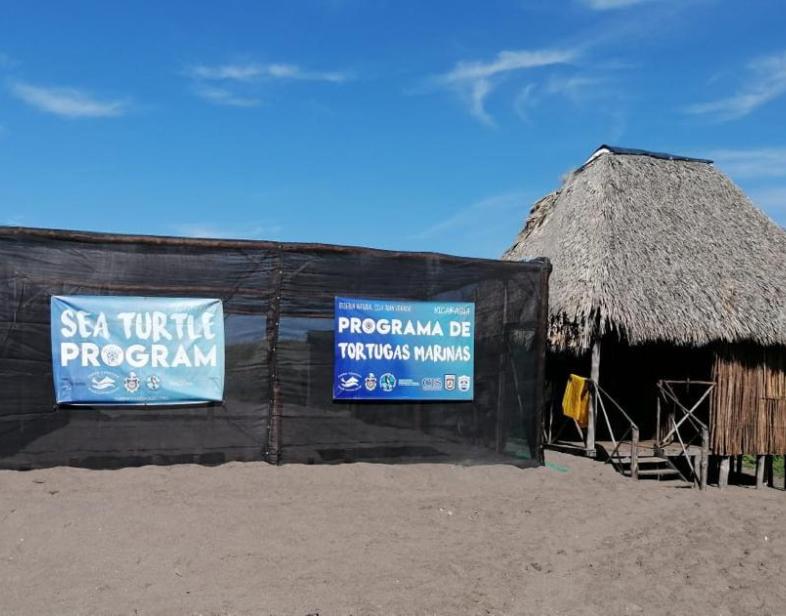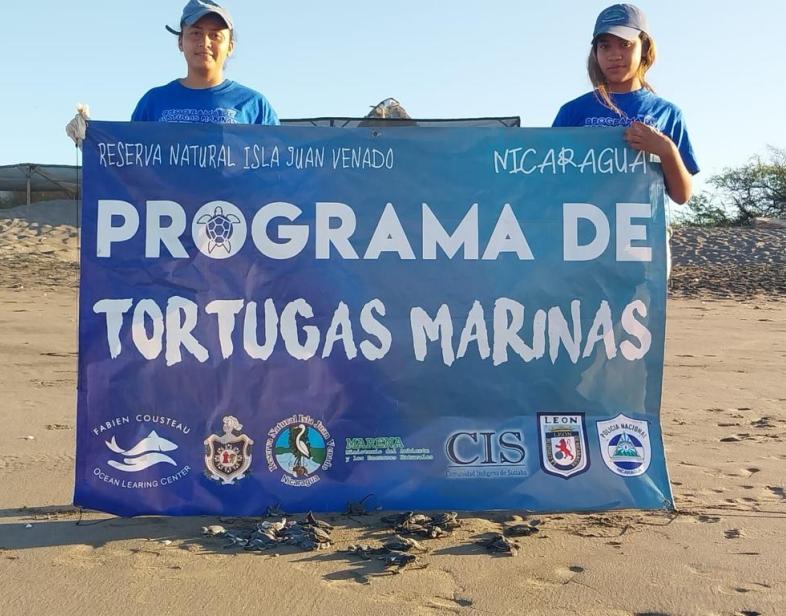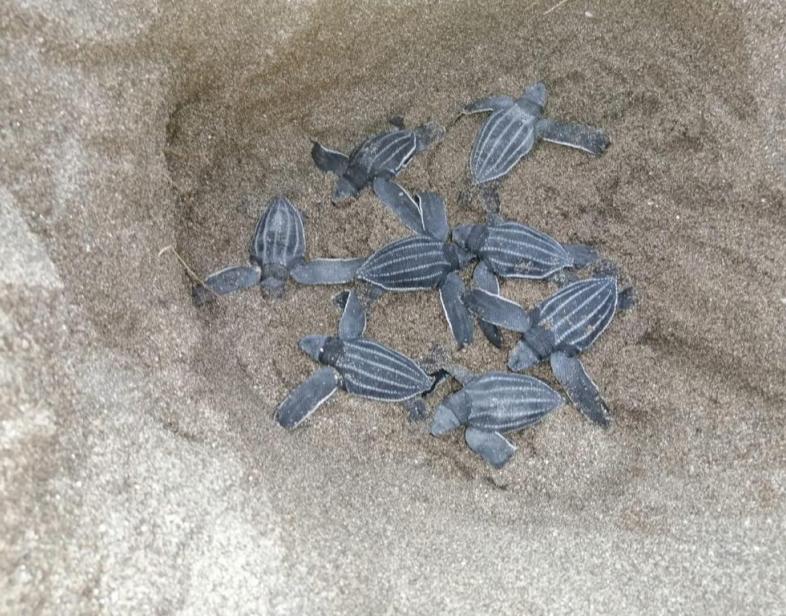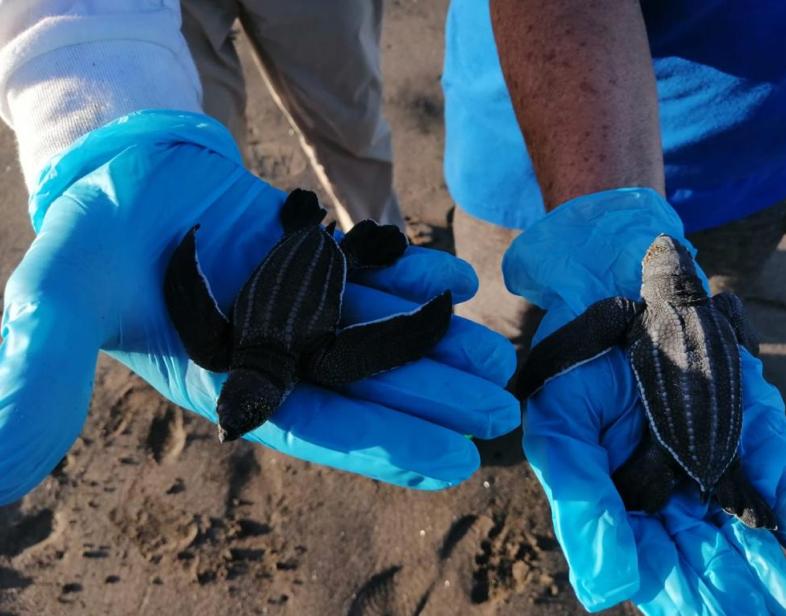An Overview Of Our Solution
The Sea Turtle Restoration and Women Empowerment in Nicaragua program is in Isla Juan Venado Nature Reserve which is located in Las Penitas, Leon, Nicaragua. The Reserve is part of the country's national park system and is well-known as a vital coastal wetland region. In 2019, the Fabien Cousteau Ocean Learning Center (FCOLC) established the program to increase the chances of survival for four species of sea turtle on the endangered species list on the IUCN Red List and to empower women and girls who manage the hatchery. After three years of growth and success with the women and hatchery, we now turn our attention to encouraging more egg poachers to be egg collectors using social, emotional and choice architecture methods.
- Population Impacted: 8000
- Continent: South America
背景分析
The project site has approximately 8,000 residents. In the area, sea turtle eggs are typically gathered, collected, consumed and/or sold for consumption and hawksbill shells are used to make jewelry and other trinkets mostly for sale in the tourist trade (pers. comm. A. Parrales). The eggs are a traditional food source among coastal communities, and many of the residents who depend on agriculture and fishing, are poor and lack sustainable alternatives. Since project inception (August 2019), some egg poachers sold their eggs to the hatchery program. More recently, in 2022, the first nest of the season was brought to the program leader’s home before the project hatchery was constructed and funds available to compensate poachers/egg collectors, illustrating that behavior change is occurring in the area.
Since 2019, twenty-seven training and community workshops to build skills and awareness in sea turtle monitoring, research, and educational activities have been held. Women and girls learn how to build sea turtle hatcheries for relocated nests, to conduct research protocols for monitoring nesting turtles, and to implement best management practices for nest relocation and hatchling releases. Interactions with poachers and egg collectors have occurred and there is more of a collaborative effort to put eggs into the hatchery versus going to market. Over 100,000 sea turtle eggs have been relocated during the project period. Project enhancements have been achieved through a partnership with a local university to strengthen research and conservation activities with students and faculty while promoting science education involving approximately 4,450 individuals from the community of Las Peñitas.
描述您希望目标受众采用的技术解决方案。
The program seeks to have egg poachers, the target audience, become egg collectors and contribute to nesting female monitoring. The technical solution uses three levers – social, emotional and choice – to encourage behavior change from poaching to egg collecting and adding the opportunity for collectors to become engaged in nesting sea turtle monitoring and flipper tagging. The project team plan to focus on expanding relationships with the poachers comprised mostly of local indigenous community members and townspeople who have permission to access the nature reserve. Prior end-of-year reporting workshops thanking the community for their involvement in the project appears to have built social influence and emotional appeals to contribute to conservation of sea turtles with more poachers becoming collectors. Choice architecture is the next step, where the team seeks to have collectors actively participate in sea turtle conservation by training them to monitor and flipper tag turtles.
描述你的行为干预。
The project team have motived people, specifically, poachers to become egg collectors over the past three nesting seasons through social influences and emotional appeals. Social influences appear to result from the direct efforts of the turtle team. The team are comprised of local community members including the indigenous Sutiaba. The team hold community workshops to build awareness of sea turtles and their importance to the ecosystem and economy tied to tourism both at the onset and end of the nesting season. The workshops highlight the positive influence indigenous leaders have on sea turtle conservation (social influence) and provide opportunities for individuals to share experiences and pride (emotional appeals) in moving nests to the hatchery. One local leader, who unfortunately passed due to Covid, was a great proponent of the project and encouraged all to participate in conservation efforts. Emotional appeals give hope through workshop pride campaigns where the women and girls share testimonials about the positive impact of the project on their lives and future. This has encouraged more individuals to get involved in the project and has encouraged poachers to become collectors. The next technical solution is to incorporate choice architecture, where the team seeks to have collectors actively participate in sea turtle conservation by training them to monitor and flipper tag turtles with a small monetary incentive for each tagged turtle.
使用的行为杠杆
如需要,请更详细地解释你是如何使用杠杆的。
The sea turtle team maintain records on nesting females, relocated nests, and hatchlings releases. This includes the individuals who bring their nests to the project site versus to market. The women and girls are thankful for the nests and recognize the collectors each season and have a public workshop to award individuals for the most nests, most eggs, etc. brought to the hatchery. The workshop is held at the co-management house where both the government and the community work together on many socio-ecological issues in their community. Emotional appeals focus on the pride individuals have both when recognized for their efforts in the project and for the legacy they leave to future generations. The women and girls provide testimonials about the positive influence of the program on their lives and community leaders from governmental and non-governmental organizations are present to encourage and grow pride in conserving natural resources in the community.
描述项目的实施。
The approached proposed uses Choice Architecture, in combination with existing social influence and emotional appeals, to encourage behavior change in the poachers turned egg collectors now monitor turtles. The desired behavior allows a conscious choice to be made to not only gather up eggs to sell to the program, but to contribute more to the conservation of turtles by learning and conducting sea turtle monitoring and flipper tagging. Implementation includes conducting a training workshop for egg collectors to use a standardized method to monitor sea turtles on the nesting beach at the onset of the 2023-24 nesting season which runs from approximately June – March. Training protocols were developed in 2022 and can be included in the pre-season workshop training. The protocols include a Train-the-Trainer module developed using the ADDIE model (Assess – Design – Develop – Implement – Evaluate) for standardized monitoring and flipper tagging nesting females (Amoroso-Wall, 2022; Branch, 2009). The training includes pre/post surveys to measure knowledge gained and also an assessment of the content and delivery of the training and hands-on training alongside turtle team members. Once training is complete, and collectors have successfully mastered the tagging protocols, they have the choice to participate in the tagging program. Incentives such as a small monetary amount per turtle tagged and recognition during workshops are included in the implementation of the program. Impact reporting includes the results of the pre/post quizzes, assessment, number of turtles tagged by collectors (as percent of nests collected), and testimonials about participation in the monitoring and tagging component of the program.
Amoroso-Wall, 2022. Evaluating the effectiveness of the FCOLC’s Sea Turtle Program’s Training and Data Collection Methodology. Internship Report University of Miami. Dec 2022.
Branch, R. M. (2009). Instructional design: The ADDIE approach. Springer Science & Bus.
描述项目的主导者。谁在主导项目实施?
The FCOLC’s approach is to serve as a facilitator and supporter of the project, rather than a leader. The FCOLC is well-poised to facilitate the project due to the project team’s 17 years of success from prior activities with stakeholders providing on-the-ground support for conservation activities designed by and for the local communities in the region. The leaders are the local community, indigenous peoples, and partners (e.g., university, mayor’s office, etc.). Women from the program, and girls under the direction of the women, lead the program. The diversity of participants is reflected in the makeup of the community. Sutiaba indigenous peoples are included in the effort and also youth environmental groups. The co-management office serves as the location for gatherings, workshops, and project planning and reporting. The ‘casa de co-manejo’ is a partnership between the government and local community.
分享参与解决方案开发和实施的关键合作伙伴。
The FCOLC supports and facilitates the project through volunteers (Project Manager and Program Director), however, key stakeholders are the on-the-ground leaders of the project. Participants include individuals from the following offices/organizations:
The Community of Las Penitas and the Sutiaba indigenous community
Role: Day-to-day management and oversight of the project is led by women who work with the community and guide youth (girls). Some members of the team are 100% Sutiaba, others are a mix, and others have relocated to the area. All are a part of the local community.
Isla Juan Venado Island Nature Reserve
Role: The Reserve serves as the project and study area where the sea turtle nurseries are located. The ‘casa de co-manejo’ or co-management house is the partnership of the government and the local community. The nature reserve is co-managed through this partnership and the co-management house is where most workshops and community meetings occur. It is not physically located on the island, but is very close and serves as a stopping point before individuals go to the island.
UNAN-Leon -National Autonomous University of Nicaragua at Leon
Role: Collaborator and partner with the FCOLC and MARENA (Ministry of Environment & Natural Resources) in conducting scientific research on sea turtles and deploying students and faculty to work on the project with the local members of the community.
MARENA-Ministry of Environment & Natural Resources
Role: Collaborator with the FCOLC and UNAN-Leon and supports the project in assisting in creation of processes for environmental education, citizen participation and decision-making on the protection of sea turtles and strengthening of ecotourism activities that reduce the economic dependence on egg extractions.
Mayor of Leon
Role: Collaborator and partner in the project.
National Police and Park Guards
Role: to enforce rules and regulations set for the nature reserve and its resources.
视频文件
谁采用了期望的行为,采取的程度如何? 解释一下你如何测量行为变化的。
The expected impact is to have poachers turned egg collectors participate in the monitoring/tagging workshop and then monitor nesting sea turtles during the 2023-24 nesting season. Choice Alternatives illustrate behavior change to become part of the monitoring program with SMART objectives:
60% of all poachers/egg collectors participate in the sea turtle monitoring training program at the beginning of nesting season (June/July)
40% of all poachers/egg collectors who participate in the training increase their knowledge of sea turtle monitoring and can properly tag a turtle within 2 months of participating in the program
50% of sea turtle nests brought to the project hatchery also include monitoring data from the nesting female (e.g., carapace size, health of turtle, etc.) and tagging information throughout the 2023-24 nesting season
20% of egg collectors share testimonials illustrating positive behavior change (monitoring and becoming stewards of resources) by the end of the season
项目是如何影响水污染的?请详细说明并包括相关的测量方法。
The environment, more specifically, information about the nesting sea turtle population at the project site should be positively impacted by improved tagging and monitoring information about nesting sea turtles. This information helps to build a better understanding of sea turtle species known to nest in the nature reserve (iucnredlist.org): Critically Endangered hawksbill, Endangered eastern Pacific green, Vulnerable leather-back, and Vulnerable olive Ridley. Flipper tagging with biometric information about each nester is used to learn more about the movement and growth of these species. A SMART objective would be: 30% increase in the number of sea turtles tagged (based on total number of nests laid and repeat nesters) with more individuals trained in flipper tagging protocols.
您的解决方案如何促进平等(包括种族、性别、民族、社会阶层/收入,或其他)?
The proposed solution seeks to empower the local community, which includes indigenous peoples from the Sutiaba, in understanding and managing their natural resources. The stipends and purchase of eggs helps provide income to the turtle team and egg collectors. Testimonials from the women in the project reflect a positive impact not only on their economic situation, but also their desire to pursue educational opportunities beyond what is available in the local community (e.g., two girls expressed their interest in pursuing university degrees as a marine biologist and veterinarian).
社会和/或社区是如何受益的?
The project has brought together the community in multiple ways. One example is the women forming a support group for one another. Another example is the connection between the project and local tour guides. Before there was a hatchery, tours would visit the beach and island, now with the hatchlings, there are many more tourists and tours being offered the chance to see the baby turtles. Schools are participating in sea turtle releases and learning about turtles and protecting habitat.
可持续发展如何得到促进?
Sustainable development can be viewed through the lens of a growing interest in sea turtle populations by the small hotels in the area. Hotels are now becoming involved in the project and recognize the importance of sea turtles, so much so, that when one nested in front of their hotel (outside of the nature reserve) they contacted the turtle team to relocate the nest and tag the nesting female. They are telling guests about the project and encouraging hatchery visits to learn more about turtles.
可持续性:描述你的解决方案的经济可持续性。
Currently the program relies on grant funding and donations. Prior to the pandemic, plans to train the women in business skills and to establish their own female led and run ecotour operation was being pursued. With the return of tourists, there is hope that this aspect of the project can be implemented in the future.
投入产出:实施这些活动的成本是多少?与你上面的结果相比,你的结果如何 这投资吗?
Annual implementation of the sea turtle project is an estimated $60,000USD/year. This does not include the project manager and program director who volunteer their time to oversee the effort, reporting, write grants, and manage some of the day-to-day from the FCOLC office. Due to the pandemic, estimating the ROI as the project was initially planned would not be fair and accurate. The project has expanded to a second location, and additional hatcheries with egg collectors bringing more nests to the project team. These additions have occurred, but with minimal additional funding. A fiscal ROI would also need to account for these factors, but overall the ROI for the FCOLC’s flagship project has been determined worthwhile and hopes to continue.
如何能将这个解决方案成功推广在其他地方?
The proposed training of egg collectors to gather nesting sea turtle data and flipper tag turtles can be replicated in Latin America. The standardized protocols developed and pilot tested in 2022 illustrate the potential for expansion, specifically in regards to the train-the-trainer aspects of the protocols. However, it remains to be seen if the 2023-24 nesting season can encourage the egg collectors to actively participate in the monitoring program (estimated start date in June/July 2023). Programs elsewhere appear to have success in encouraging poachers to participate in conservation, but the importance of community engagement should be emphasized. The funding requirements to carry out collectors becoming monitors is an estimated $20,000USD. A budget estimate can be provided upon request. Stakeholders include the project team, egg poachers/collectors, tagging equipment, turtle team equipment, boat fuel, egg purchase, workshop costs, etc.
